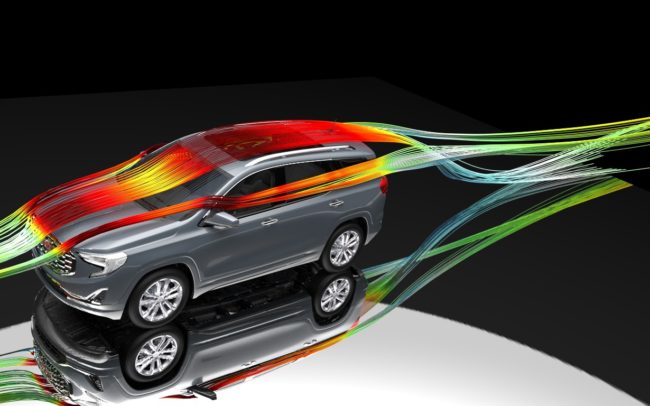
GMC Aerodynamicists use computational fluid dynamic tools to analyze the airflow around the vehicle. By minimizing the aerodynamic drag, Terrain customers can expect up to 3 more miles per gallon compared to the previous generation, for an EPA-estimated 26 mpg combined for AWD models.
GMC and Wilson football engineering teams share a common goal
DETROIT — What do a football and an SUV have in common? Both rely on exceptional aerodynamics to perform to their fullest, and the GMC Terrain and Wilson leather NFL game footballs are perfect examples.
GMC Terrain engineers clocked more than 300 hours in the wind tunnel to refine every surface of the Terrain, from the front grille to the rear spoiler.
“Reducing the aerodynamic drag of an SUV is always a challenge,” said GMC Aerodynamic Engineer Alicia Bidwell. “Our engineering team paid attention to even the smallest details to deliver the size and cargo space our customers want.”
The Terrain’s lifted stance means that more air can flow under the vehicle and pressurize the chassis components, which increases aerodynamic drag. To reduce this drag and optimize aero performance, Terrain aerodynamicists used testing and simulation to craft features that effectively guide air to the back of the vehicle.
This attention to detail and craftsmanship delivered the next chapter of GMC’s design language and assisted in providing more athletic handling and bold performance for Terrain customers.
“The styling that you can see — and the mechanical components that you can’t — work together in perfect aerodynamic harmony,” said Bidwell. “Ultimately, this means up to 3 more miles per gallon for the Terrain driver for an EPA-estimated 26 mpg combined for AWD models.”
As a longtime sponsor of ESPN’s Monday Night Red Carpet Kickoff, GMC knows a thing or two about the American pastime. But the connection doesn’t stop there.
Just like airflow is essential for vehicle performance, football aerodynamics are critical for game time performance. While the vehicle and a football are vastly different in size and function, the aerodynamics teams for both analyze air trails using tools such as computational fluid dynamic (CFD) analytics.
“Many look at our NFL football and see it as a simple object,” said Daniel Hare, aerodynamics research engineer, Advanced Innovation, Wilson Sporting Goods. “However, the amount of engineering, particularly in the area of aerodynamics, that has gone into the ball is pretty extraordinary. Every millimeter of the football has been designed to maximize the airflow around it so we can extend its flight, reduce drag and help maintain stability as much as possible.”
Hare points to the classic football shape and how Wilson researchers have enhanced that shape over time to reflect today’s passing-centric game, where aerodynamic properties such as velocity, direction of motion and spin rate are critical.
Beyond shape, Wilson researchers also look at the pebble pattern of the leather on an NFL game football as well as the height of the laces, both of which are aerodynamic levers engineers utilize to optimize laminar airflow (the airflow that is smooth and consistent) while mitigating turbulent airflow, which is highly unsteady and unpredictable.
The stakes are high in Super Bowl LII and the crossover segment, but both GMC and Wilson feel confident they’ll score.

